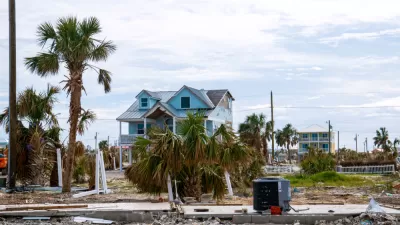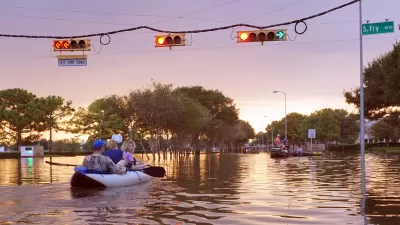Sea Isle City, where homeowners once feared they would be unable to buy insurance due to poor flood management practices, is now leading the state in flood control planning.

The community of Sea Isle City, New Jersey is implementing an ambitious flood management plan after decades of being known as a town with a “dismal” flood protection reputation.
As Ysabelle Kempe reports in Smart Cities Dive, “Over the last three decades, Sea Isle City has achieved the highest rank of any New Jersey city in FEMA’s Community Rating System, a voluntary incentive-based program designed to encourage strong floodplain management.”
The rating means local homeowners are not at risk of losing their insurance or seeing skyrocketing rates — at least for now. “Only one other New Jersey community, Avalon, has accomplished the same status since, and no Class 1 or 2 communities exist in New Jersey.”
To ensure better flood mitigation, the city updated its zoning code to require that new buildings be elevated and invested in berms and bulkheads to protect the town. Future projects could include flood pumps, which can move large amounts of water during tidal flooding.
FULL STORY: This New Jersey beach city went from ‘worst to first’ in reducing flood risk

Trump Administration Could Effectively End Housing Voucher Program
Federal officials are eyeing major cuts to the Section 8 program that helps millions of low-income households pay rent.

Planetizen Federal Action Tracker
A weekly monitor of how Trump’s orders and actions are impacting planners and planning in America.

Ken Jennings Launches Transit Web Series
The Jeopardy champ wants you to ride public transit.

Washington Legislature Passes Rent Increase Cap
A bill that caps rent increases at 7 percent plus inflation is headed to the governor’s desk.

From Planning to Action: How LA County Is Rethinking Climate Resilience
Chief Sustainability Officer Rita Kampalath outlines the County’s shift from planning to implementation in its climate resilience efforts, emphasizing cross-departmental coordination, updated recovery strategies, and the need for flexible funding.

New Mexico Aging Department Commits to Helping Seniors Age ‘In Place’ and ‘Autonomously’ in New Draft Plan
As New Mexico’s population of seniors continues to grow, the state’s aging department is proposing expanded initiatives to help seniors maintain their autonomy while also supporting family caregivers.
Urban Design for Planners 1: Software Tools
This six-course series explores essential urban design concepts using open source software and equips planners with the tools they need to participate fully in the urban design process.
Planning for Universal Design
Learn the tools for implementing Universal Design in planning regulations.
Heyer Gruel & Associates PA
Ada County Highway District
Institute for Housing and Urban Development Studies (IHS)
City of Grandview
Harvard GSD Executive Education
Toledo-Lucas County Plan Commissions
Salt Lake City
NYU Wagner Graduate School of Public Service





























